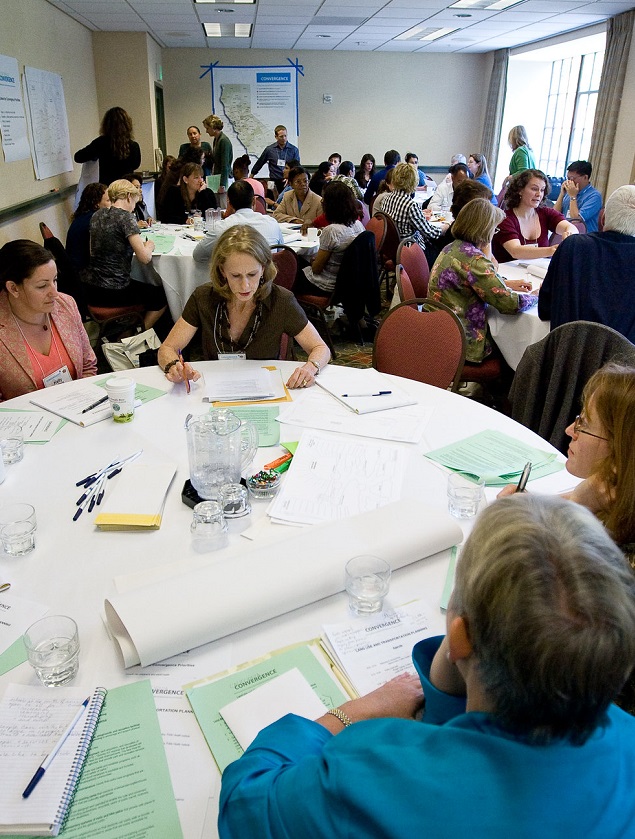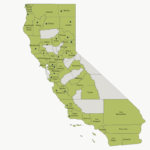Giving Local Coalitions Tools and Support to Stop Overdose Deaths
Highlights

Thanks to PHI's California Overdose Prevention Network, more than 30 coalitions—reaching 85% of Californians—share ideas, learn better methods, and discover the latest strategies to prevent new addictions, increase access to treatment, and stop overdose deaths.
30+ coalitions throughout CA helping to prevent addiction and stop overdoses
100% of participating coalitions are implementing naloxone distribution
70% implementing local policy changes
80% promoting harm reduction services
-
Focus Areas
Alcohol, Tobacco, Drugs & Mental Health, Healthy Communities -
Expertise
Coalition & Network Building, Health Education & Promotion, Leadership Development -
Strategic Initiatives
Opioids
In 2018, PHI’s California Overdose Prevention Network (COPN) launched an Accelerator Program to support local coalitions to strive for greater impact within their communities, focused on preventing new addictions, increasing access to treatment, and stopping overdose deaths.
Now more than 30 coalitions—reaching 85% of Californians—share ideas, learn better methods, and discover the latest strategies to prevent new addictions, increase access to treatment, and stop overdose deaths.
COPN is a program of PHI’s Center for Health Leadership and Impact (CHLI). In February 2020, CHLI also launched the National Overdose Prevention Network (NOPN) with a vision to transform the field across the country. NOPN is a national learning community, designed to support local, regional and statewide overdose prevention efforts that draw communities together to save lives.
COPN: The largest overdose prevention network in California and the nation
 With support from expert coaches, coalitions participating in our COPN Accelerator 3.0 program use tools that support long-term community impact. Teams have the tools they need to measure and communicate their impact and build a foundation for a new or expanded community intervention. Learning groups help teams focus on a strategy or area of interest of their choice, giving them the ability to customize the program experience to meet the specific needs within their local community.
With support from expert coaches, coalitions participating in our COPN Accelerator 3.0 program use tools that support long-term community impact. Teams have the tools they need to measure and communicate their impact and build a foundation for a new or expanded community intervention. Learning groups help teams focus on a strategy or area of interest of their choice, giving them the ability to customize the program experience to meet the specific needs within their local community.
COPN also sponsors the largest AmeriCorps VISTA program dedicated to opioid safety in the country, with the capacity to place 40 VISTA members in coalitions across the state.
Helping coalitions adopt a health equity lens
Case study: Drug Safe Solano
Health equity is not just health equity, it's also social justice, it's also social equity, so we try to adopt a more holistic approach to that.Arthur Camargo
Drug Safe Solano Coordinator
Helping coalitions foster new connections
Case study: El Dorado Opioid Coalition
We really worked a lot with the Persuasive Narrative Tool to develop a script that we could use to find intersections on where our work dissects or comes together [with the faith-based community].Kirsten Rogers
Project Manager
Supporting coalition strategic partnership development
Case study: Contra Costa County MEDS Coalition
We used the Accelerator program and the Partnership Mapping Tool to help us identify: who are the critical players, who did we feel like we needed to outreach to, and we began that process by having focus sessions with individuals [community stakeholders].April Rovero
Coalition Chairperson
Helping coalitions pinpoint their priorities
Case study: San Benito County Opioid Task Force
The COPN Accelerator 2.0 Program has been really helpful in continuing to build the coalition. This program gave us structure in an action oriented trajectory, even with COVID-19, it was helpful to have these different goals and objectives from Accelerator 2.0.Veronica Johnson
Health Educator II and Program Coordinator
Helping coalitions build multi-sector partnerships
Case study: Butte Glenn Opioid Safety Coalition
For us, it was the perfect time to focus on law enforcement, plus we were doing the CDPH opioid grant which focused on the criminal justice system as partners, so it really worked well to combine the Accelerator 2.0 program with our CDPH grant and do the outreach [with law enforcement] to try to affect some policy change.Monica Soderstrom
Division Director, Community Health
Coalition Activities & Impact
- 30% Implementing Academic Detailing
- 70% Promoting Adoption of Safe Prescribing Guidelines
- 100% Using Opioid Safety/ Surveillance Data at Local Level
- 80% Increasing Access to MAT
- 50% Promoting healthy pain management and alternatives
- 100% Implementing Naloxone Distribution
- 70% Implementing Local Policy Changes
- 90% Increasing Public Awareness of Opioid Safety
- 80% Promoting Harm Reduction Services
- 90% Collaborating with Law Enforcement
- 100% Working with At-Risk Populations
A version of this impact story was first published on the COPN site.
Work With Us
You change the world. We do the rest. Explore fiscal sponsorship at PHI.
Support Us
Together, we can accelerate our response to public health’s most critical issues.
Find Employment
Begin your career at the Public Health Institute.
